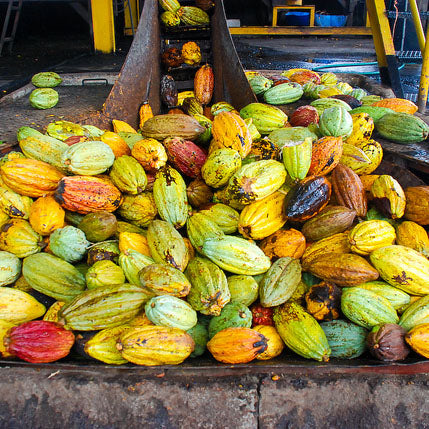mmmmmmm chocolate, just the thought of it is enough to make me float off to my happy place, a magical land full of cacoa nib fairies, loose pants, tropical breezes, and…..wait…is that a freakin fly??! How did a fly get into my goldang happy place?! Sigh…
Well, as it turns out, if it weren’t for flies, there would be no chocolate for anyone’s happy places! It’s tough to be an obscure little pollinator in a honeybee kind of world, especially when you don’t have the cute fuzzy thing going for you, you are no bigger than the head of a pin, and most of your relatives are bitey jerkfaces. Indeed, most members of the family Ceratopogonidae, commonly called “midges” or “biting midges”, feed on the blood of other insects, reptiles, and mammals that forget their deet. Surprisingly it’s only the famale midges who do all that biting, as they require the extra nutrition for their eggs. However male midges are super sweet, and feed exclusively on nectar! Most importantly, they have a taste for the nectar from the flowers of the cacao plant:
Cacao flowers are smaaaaall, about the size of a nickel, and structurally complex. Luckily midges are small and agile, and like a miniature Magellan on a nectar expedition, they navigate the tricky flowers with ease. But the cacao plant is complicated not just in design but also in behavior. It fruits year-round, and has the unusual quilaity of having flowers and fruit on the tree at the same time! You would think this would make it very productive, however, it takes 5 to 8 months for the blossom bud to ripen fully, and although the flower posesses both male and female parts, they cannot fertilize themselves, and so must rely on our little pollinator friends to transport pollen between them.
The cacao-pollinating midges are unionized, and they have demands! Their biggest gripe is that they require humid shade with a wide range of plant species and decaying matter on the ground, which is the natural habitat of cacao. However, on most cultivated plantations, the habitat is more open, sunny, and dry. And the bigger a cacao plantation, the less likely a midge will venture into this unnatural habitat. It has been estimated that on these plantations on average only 3 out of 1,000 flowers are pollinated and progress to fuit!
To combat these issues chocolate manufacturers increase prodcutivity by growing their cacao plants in a more natural way that midges enjoy, in fact many Fair Trade and organic Cacao farmers are cultivating more wild plantations that are better for the trees and the midges who love them. So in the name of deliciousness, I say, good job little fellas!
Many thanks to the talented photographers who post their photos on Flickr Creative Commons:
EverJean –http://www.flickr.com/photos/evert-jan/with/5526911147/#photo_5526911147
Eric Hunt – http://www.flickr.com/photos/ericinsf/with/677318379/#photo_677318379
Christopher S. Rose – http://www.flickr.com/photos/khowaga/2890251482/
(Repost): Original Post: https://thebefuddledloris.wordpress.com/2013/04/26/i-got-99-problems-but-a-midge-aint-one/







